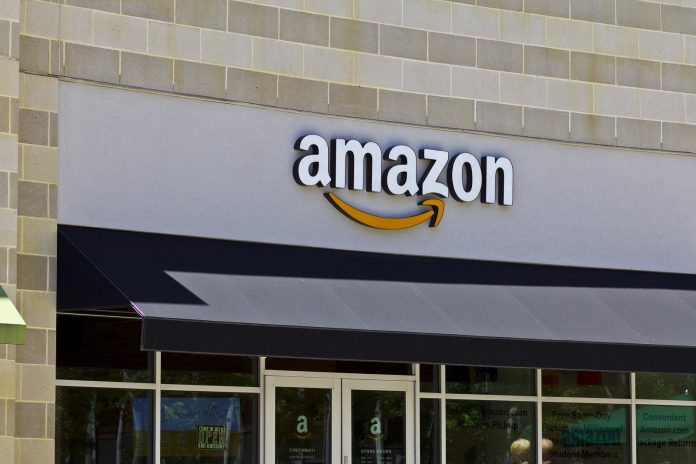Amazon is on a mission to be everywhere the consumer is. The e-tail giant owns 41.2% of the e-commerce market share, according to Slice Intelligence. To put that into perspective, Best Buy and Nordstrom are second in line with 2.7% market share.
Now, Amazon is hoping to be your go-to brick and mortar store for all your daily essentials. Yes, Amazon announced the launch of its Go stores. But Go stores aren’t your usual grocery or convenience stores. These shops have no checkout lines.
Amazon’s announcement of Go stores was met with praise and criticism. Consumers rejoiced at the idea of not having to wait in line, but critics fear the stores may be the next jobs killer.
The Go store concept is simple, but revolutionary. Customers walk in, scan the Amazon Go app on their phones, and start shopping.
When items are removed from the shelf, they’re automatically added to the customer’s cart. Unwanted items are removed when they’re put back on the shelf.
Rather than waiting in line to check out with a cashier, customers just walk out the door and go about their day.
The app adds up all the items in the cart, and automatically charges your Amazon account as you walk out the door.
Amazon is currently testing out their store concept at a single shop in Seattle.
So how does all this work? Amazon uses deep learning algorithms, computer vision, and sensor fusion to bring this “just walk out” concept to life. The technology is similar to what self-driving cars use.
It’s easy to see why many fear that the Go concept will be the “next jobs killer,” a label given by the New York Post. With no cashiers or checkout lines, Go stores will have few employees.
Automation has already killed thousands of jobs, and according to a report from CNN Money, it will kill another five million by 2020 in the tech field. The technology in Go stores could add millions more to that list.
But there are two important things to remember here: there’s no guarantee that the concept will work, and even if it does, customer service will be lacking. Amazon will also face challenges in preventing theft.
The Go store concept is centered on the “get in and get out” idea, which isn’t a model that will work for every type of retail store. When buying high-ticket or niche items, customers often look for assistance from human employees. The importance of the customer service element should not be underestimated.
Millennials may embrace Go stores with open arms, but older consumers may still prefer stores with human employees.
We may see grocery and convenience stores adopting this technology early on, but again, there are challenges. Stores may be limited to selling only pre-weighed and packaged foods, which may not sit too well with health-conscious consumers.
If the Go store concept catches on, the death of retail jobs may be slow and painful, rather than quick and ferocious. But before we throw our arms up in despair, let’s wait and see how well things play out with the testing phase.
Amazon Go stores are expected to start opening to the public in 2017.

























